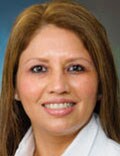For Sonja O'Leary, MD, higher rates of vaccination against human papillomavirus came with the flip of a switch.

Dr Sonja O'Leary
O'Leary, the interim director of service for outpatient pediatric services at Denver Health and Hospital Authority (DHHA), and her colleagues saw rates of HPV and other childhood immunizations drop during the COVID-19 pandemic and decided to act. Their health system, which includes 28 federally qualified health centers, offers vaccines at any inpatient or outpatient visit based on alerts from their electronic health record.
"It was actually really simple; it was really just changing our best-practice alert," O'Leary said. Beginning in May 2021, and after notifying clinic staff of the impending change, DHHA dropped the alert for first dose of HPV from age 11 to 9.
The approach worked. Compared with the first 5 months of 2021, the percentage of children aged 9-13 years with an in-person visit who received at least one dose of HPV vaccine between June 2021 and August 2022 rose from 30.3% to 42.8% — a 41% increase. The share who received two doses by age 13 years more than doubled, from 19.3% to 42.7%, O'Leary said.
Frustrated Efforts
Although those figures might seem to make an iron-clad case for earlier vaccinations against HPV — which is responsible for nearly 35,000 cases of cancer annually — factors beyond statistics have frustrated efforts to increase acceptance of the shots.
Data published last year from the US Centers for Disease Control and Prevention found that 89.6% of teens aged 13-17 years received at least one dose of tetanus, diphtheria, and acellular pertussis vaccine (Tdap), and 89% got one or more doses of meningococcal conjugate vaccine (MenACWY). But only 76.9% had received one or more doses of HPV vaccine. The rate of receiving both doses needed for full protection was much lower (61.7%).
Both the American Academy of Pediatrics and the American Cancer Society now endorse the strategy of offering HPV vaccine as early as age 9, which avoids the need for multiple shots at a single visit and results in more kids getting both doses. In a recent study that surveyed primary care professionals who see pediatric patients, 21% were already offering HPV vaccine at age 9, and another 48% were willing to try the approach.
What was the most common objection to the earlier age? Nearly three quarters of clinicians said they felt that parents weren't ready to talk about HPV vaccination yet.

Dr Noel Brewer
Noel Brewer, PhD, one of the authors of the survey study, wondered why clinicians feel the need to bring up sex at all. "Providers should never be talking about sex when they are talking about vaccine, because that's not the point," said Brewer, the distinguished professor in public health at the University of North Carolina at Chapel Hill. He pointed out that providers don't talk about the route of transmission for any other vaccine.
Brewer led a randomized controlled trial in 2017 that trained pediatric clinicians in the "announcement" strategy, in which the clinician announces the vaccines that are due at that visit. If the parent hesitates, the clinician then probes further to identify and address their concerns and provides more information. If the parent is still not convinced, the clinician notes the discussion in the chart and tries again at the next visit.
The strategy was effective: Intervention clinics had a 5.4% higher rate of HPV vaccination coverage than control clinics after six months. Brewer and his colleagues have trained over 1700 providers in the technique since 2020.
A Cancer — not STI — Vaccine
Although DHHA hasn't participated in Brewer's training, O'Leary and her colleagues take a similar approach of simply stating which vaccines the child should receive that day. And they talk about HPV as a cancer vaccine instead of one to prevent a sexually transmitted infection.
In her experience, this emphasis changes the conversation. O'Leary described a typical comment from parents as, "Oh, of course I would give my child a vaccine that could prevent cancer."

Dr Ana Rodriguez
Ana Rodriguez, MD, MPH, an obstetrician, became interested in raising rates of vaccination against HPV after watching too many women battle a preventable cancer. She worked for several years in the Rio Grande Valley along the US border with Mexico, an impoverished rural area with poor access to healthcare and high rates of HPV infection.
"I would treat women very young — not even 30 years of age — already fighting advanced precancerous lesions secondary to HPV," said Rodriguez, an associate professor of Obstetrics & Gynecology at the University of Texas Medical Branch at Galveston.
In 2016, when Texas ranked 47th in the nation for rates of up-to-date HPV vaccination,
Rodriguez helped launch a community-based educational campaign in four rural counties in the Rio Grande Valley using social media, radio, and in-person meetings with school PTA members and members of school boards to educate staff and parents about the need for vaccination against the infection.
In 2019 the team began offering the vaccine to children ages 9-12 years at back-to-school events, progress report nights, and other school events, pivoting to outdoor events using a mobile vaccine van after COVID-19 struck. They recently published a study showing that 73.6% of students who received their first dose of vaccine at age 11 or younger completed the series, compared with only 45.1% of children who got their first dose at age 12 or older.
Rodriguez encountered parents who felt 9 or 10 years old was too young because their children were not going to be sexually active anytime soon. Her response was to describe HPV as a tool to prevent cancer, telling parents, "If you vaccinate your kids young enough, they will be protected for life."
Lifetime protection is another point in favor of giving HPV vaccine prior to Tdap and MenACWY. The response to the two-dose series of HPV in preadolescents is robust and long-lasting, with no downside to giving it a few years earlier. In contrast, immunity to MenACWY wanes after a few years, so the immunization must be given before children enter high school, when their risk for meningitis increases.
The annual toll of deaths in the United States from meningococcus, tetanus, diphtheria, and pertussis typically totals less than 100, whereas cancer deaths attributable to HPV infection number in the thousands each year. And that may be the best reason for attempting new strategies to help HPV vaccination rates catch up to the rest of the preteen vaccines.
Brewer's work was supported by the Gillings School of Global Public Health and the Lineberger Comprehensive Cancer Center at the University of North Carolina, and from training grants from the National Cancer Institute. Brewer has received research funding from Merck, Pfizer, and GSK and served as a paid advisor for Merck.
O'Leary reports no relevant financial relationships. Rodriguez received a grant from the Cancer Prevention Research Institute of Texas, and the study was supported by the Institute for Translational Sciences at the University of Texas Medical Branch, which is funded in part by a Clinical and Translational Science Award from the National Center for Advancing Translational Sciences, National Institutes of Health, and The University of Texas MD Anderson Cancer Center's HPV Vaccination Initiative.
Ann Thomas, MD, MPH, is a pediatrician and epidemiologist living in Portland, Oregon.
For more news, follow Medscape on Facebook, Twitter, Instagram, YouTube, and LinkedIn
Credits:
Lead image: The Image Bank/Getty Images
Image 1: Scott Dressel-Martin
Image 2: Brian Strickland
Image 3: University of Texas Medical Branch at Galvesto
Medscape Medical News © 2023 WebMD, LLC
Send news tips to news@medscape.net.
Cite this: Why 9 Is Not Too Young for the HPV Vaccine - Medscape - Apr 10, 2023.






